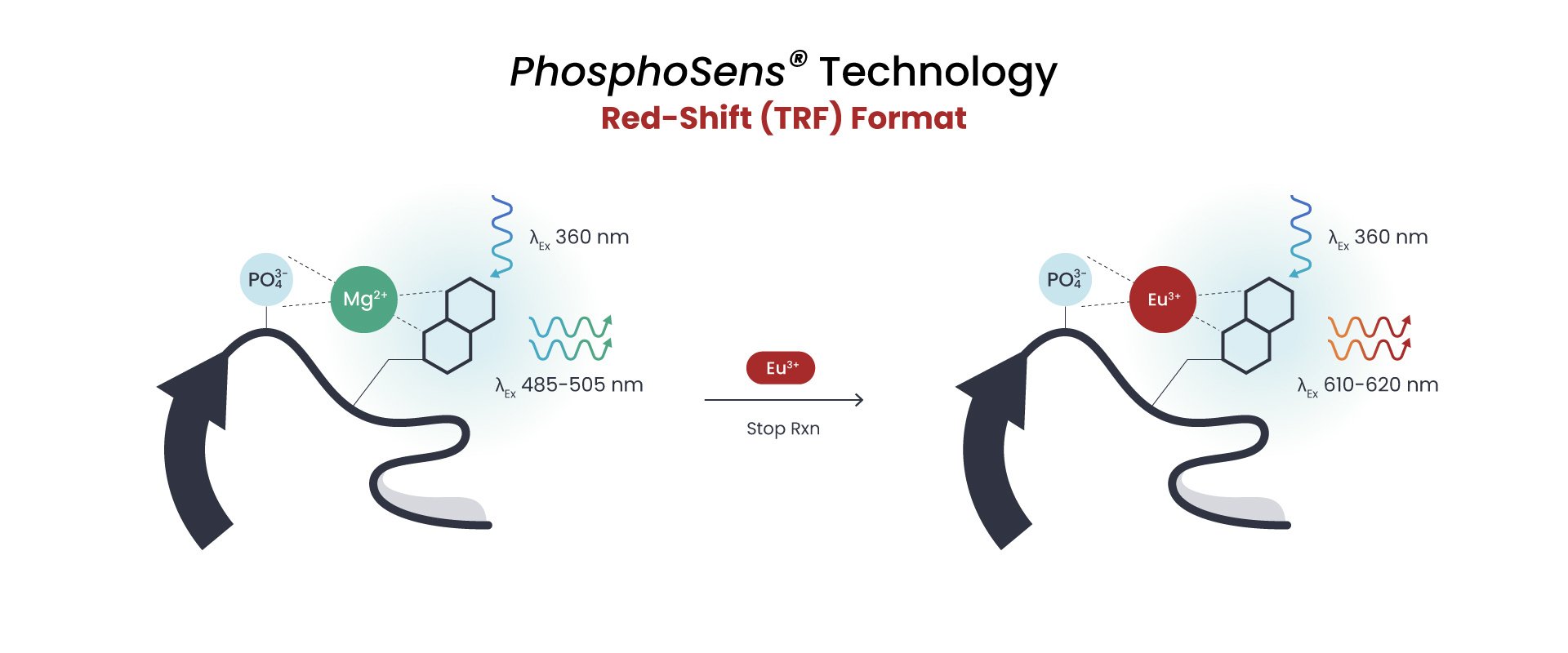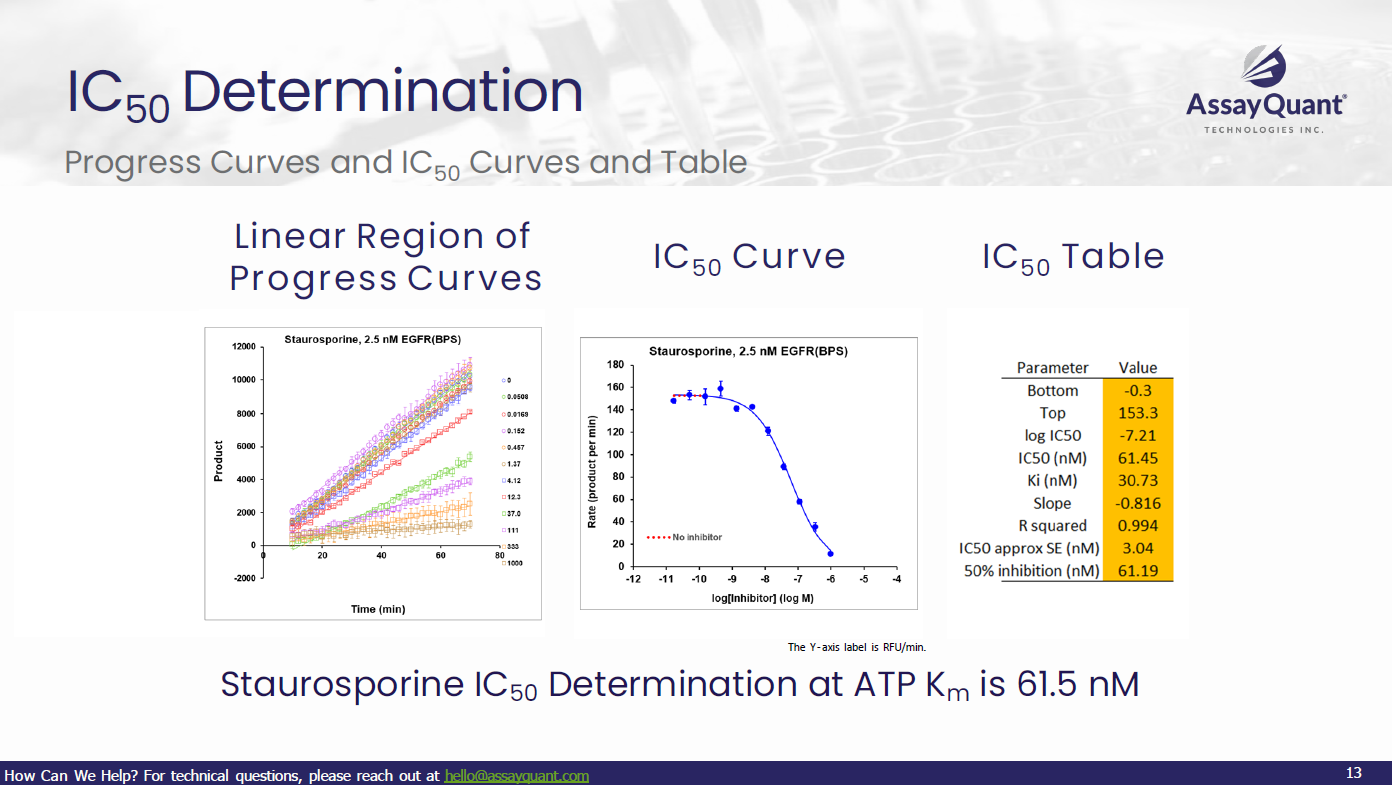Product Information
The recommended PhosphoSens Sensor Peptide Substrate to screen EGFR inhibitors in the PhosphoSens-Red format is AQT0653
Optimized for EGFR: Study enzyme activity, generate kinetic data, discover inhibitors, characterize mechanisms of action (MOA), and more.
.jpg)
Interested in placing a custom order?
At AssayQuant, we understand that each project is unique. That's why we offer custom orders tailored to your specific needs! Whether you're looking for a unique assay configuration or specialized product specifications, we are here to help.
Contact Us to discuss how we can meet your requirements.
SUBMIT CUSTOM INQUIRYProduct Configurations
EGFR PhosphoSens-Red Discovery Kit
Recommended Product: PhosphoSens-Red Kinase Discovery Kit AQT0653
- Designed for streamlined technology evaluation, PhosphoSens Discovery Kits enable 200 assays. Each kit includes substrate and all essential reaction reagents (ATP, DTT, EGTA, Enzyme Reaction Buffer, Enzyme Dilution Buffer and Europium), optimized for your convenience. Enzyme not included.
EGFR PhosphoSens-Red Kinase Substrate
Recommended Product: PhosphoSens Kinase Substrate AQT0653
- Flexible, scalable, and cost-effective! Available by the milligram, with each milligram enabling an average of 2,500 assays, PhosphoSens Substrates are ideal for high-throughput needs and custom workflows.
PhosphoSens-Red Kinase Substrate System AQT0653
Recommended Product: PhosphoSens-Red Kinase Substrate System AQT0653
- Comprehensive and adaptable! These systems pair bulk substrate with sufficient supporting reagents (ATP, DTT, EGTA, Enzyme Reaction Buffer, Enzyme Dilution Buffer and Europium) to perform the full number of assays for each milligram of substrate purchased—giving you everything you need for seamless assay execution.
Upon checking out, you will be redirected to our Shopify Site and given instructions for logging in. Purchases via Shopify are available via credit card only.
Planning to purchase via PO?
CONTACT OUR SALES TEAMHow It Works
Because many compound libraries contain auto-fluorescent compounds, AssayQuant offers PhosphoSens Red assays that allow detection at longer (>600 nm) wavelength, with the same excitation maximum, and use time-resolved fluorescence (TRF).

PhosphoSens-Red High Throughput Screen (HTS) and IC50 Determination
This protocol outlines assay conditions when working in a low‐volume 384‐well plate with 20 µL final well volume (before NaOH and Europium addition) and 10 µM Sensor peptide at 1 mM ATP. It assumes that an optimal concentration of kinase and DMSO in the reaction has been previously determined or otherwise chosen. If performing an HTS screen, compounds can be added from 50X stocks in 100% DMSO directly to the assay to avoid intermediate compound precipitation. Blanks and enzyme controls should also contain an equal amount of 100% DMSO. It is recommended to run separate compound blanks for compounds that are predicted to have absorbance or fluorescence to avoid false negatives or positives. For an IC50 determination, a 12-point compound titration (including a “0” compound concentration) should be run in duplicate using a 3-fold dilution scheme for each compound with a separate blank at each compound concentration. Each compound concentration should have a minimum of 8 timepoints collected to most accurately access initial reaction rate which is why the kinetic assay format is recommended for IC50 value determinations. Final assay concentrations will be the same as above except for the additional of 2% DMSO final with or without compound.
Sample Report: AQT0734 - EGFR Assay Validation Report
Each validation report provides experimental conditions and data showing:
